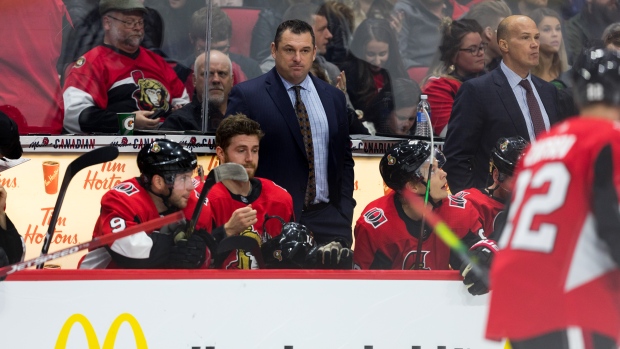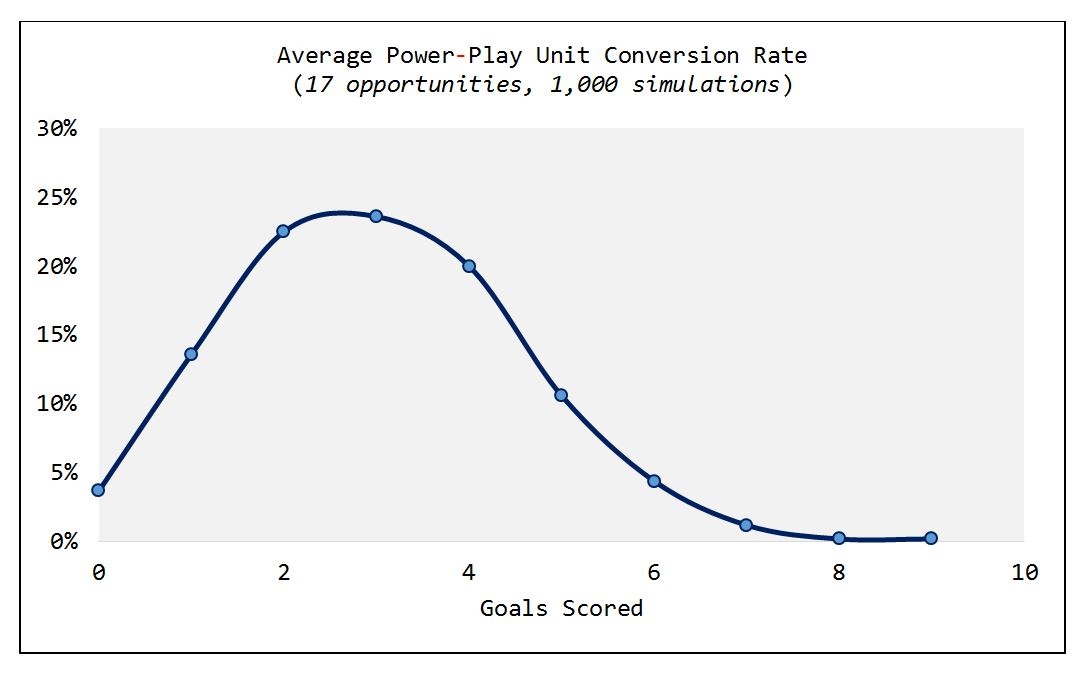Oct 17, 2019
Smith searching for answers to Sens’ struggling power play
Ottawa’s first-year coach continues to tinker with power-play units that are sputtering early in the season, Travis Yost writes.
By Travis Yost

It’s a rebuilding year in the nation’s capital. If you needed any evidence of that, watch some film of the Ottawa Senators on the power play.
D.J. Smith’s first year as an NHL head coach was expected to be challenging. The organization spent the past two seasons stripping away most of the talent from the lineup to prepare for a lengthy rebuild – one that has delivered a number of intriguing prospects who will steadily flow through the pipeline over the next couple of seasons. Sens management believes the team will be ready to contend starting in the 2021-22 season, though that seems deeply contingent on the development of said prospects and the team’s ability to land more talent via trade or free agency over the next two seasons.
This year is all about development and trying to instill a productive structure that will help win hockey games once that talent enters the lineup. While the team has had some mixed success early on, there have been obvious growing pains – none more obvious than the 17 power-play opportunities the team has had over the first five games.
The Senators are still searching for their first power-play goal. They aren’t alone in such a search – both the Anaheim Ducks and New Jersey Devils are also goalless on the man advantage. While going 0-for-17 might sound like quite an achievement, mathematically speaking, the truth is it happens a fair bit. A league-average power play – one that converts on about 18 per cent of opportunities – will see this happen about 3 per cent of the time. A quick simulation (1,000 trials) for an average power-play unit shows the likelihood of such an occurrence:

That’s the good news. The bad news is that both the video and numbers suggest that this unit is far below average, which means that the true likelihood of this team not scoring a power-play goal given 17 chances may be much higher. The Sens struggle to enter the zone with control, the bulk of their shots are kept to the perimeter and most of their attacking sequences – in the rare chance they manifest – end in one-and-done scenarios.
No number speaks better to the struggle the Senators have gaining and sustaining the zone than the number of shots they are generating up a man per 60 minutes of play. Ottawa, with about 30 minutes of power-play time on the season, is averaging just 64 attempts at the net per 60 minutes. For context, the average power-play unit will generate close to a 100 attempts per 60 minutes, and Toronto sends more attempts at the net at 5-on-5 than Ottawa does on the power play. It is dire.
Here are just a handful of underlying measures to consider:

I can’t articulate how little shot volume that is, even over just 30 minutes of power-play time. Some of the least effective power plays in the modern era – the 2007-08 Chicago Blackhawks and Edmonton Oilers, the 2012-13 Tampa Bay Lightning, the 2014-15 Buffalo Sabres – were firing 20 to 25 per cent more shots at the net. It’s indicative of a team that’s struggling to both gain and sustain the offensive zone, and even in the oft chance they do, a good portion of the shots are from distance.
It’s clear that Smith will continue to tinker with the personnel on both of his power-play units. The team has embraced the increasingly popular four-forward, one-defenceman set, with Thomas Chabot taking over the Erik Karlsson role of puck distributor from the back end. While Chabot is a constant, the forwards continue to move in and out of different power-play lineups. Anthony Duclair, Brady Tkachuk and Colin White have seen the most usage to date, but Tyler Ennis, Bobby Ryan, Connor Brown, Chris Tierney, and even the newly acquired Vladislav Namestnikov have been early fixtures as well.
The good news for Ottawa is that short-term relief may be available. After two tall orders against elite penalty kills in Vegas and Arizona to end this week, the Senators will face Dallas and Detroit – two teams who have bled scoring chances against and goals against when down a man in the first two weeks of the season.
But Ottawa is going to struggle to score goals up a man with this type of production over the course of the regular season. If that’s the case, their fight to remain competitive in the standings is going to be even tougher than originally anticipated.
Data via Natural Stat Trick and Evolving Hockey

